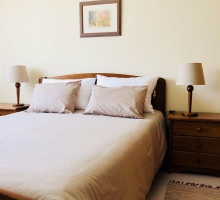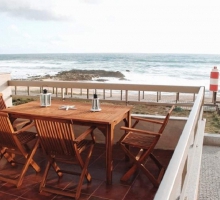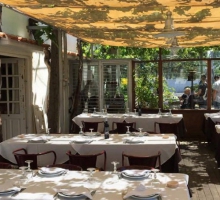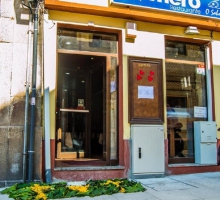In 1868, construction began on the new church - in front of the old building - and the body blessed in 1872.
It is a neoclassical church with a longitudinal plan and a single nave, with a front flanked by two bell towers and topped by an “andulated” pediment. The interior is decorated with neoclassical carved altarpieces, with good baroque and naturalistic imagery, namely sculptures by João d 'Affonseca Lapa.
Also noteworthy are the paintings on the ceiling of the chancel (with allegorical motifs) and the cloth of the tribune with the Ascension of Christ (1918) by Master Joaquim Lopes.
An alizar (high-skirted) of blue and white tiles, with a single figure, with religious symbols, surrounds the nave.
Already the side walls of the chancel are fully tiled, also in shades of blue, featuring decorative plant details, architectural and scenes from the life of Christ, dated from 1923 and produced in the Fonte Nova Factory, Aveiro. The baptistery also has a panel dated and signed by Silvestre Silvestri (painter of tiles, such as those made outside the Order of Carmo, Porto, in 1912).
Location: Póvoa de Varzim
It is a neoclassical church with a longitudinal plan and a single nave, with a front flanked by two bell towers and topped by an “andulated” pediment. The interior is decorated with neoclassical carved altarpieces, with good baroque and naturalistic imagery, namely sculptures by João d 'Affonseca Lapa.
Also noteworthy are the paintings on the ceiling of the chancel (with allegorical motifs) and the cloth of the tribune with the Ascension of Christ (1918) by Master Joaquim Lopes.
An alizar (high-skirted) of blue and white tiles, with a single figure, with religious symbols, surrounds the nave.
Already the side walls of the chancel are fully tiled, also in shades of blue, featuring decorative plant details, architectural and scenes from the life of Christ, dated from 1923 and produced in the Fonte Nova Factory, Aveiro. The baptistery also has a panel dated and signed by Silvestre Silvestri (painter of tiles, such as those made outside the Order of Carmo, Porto, in 1912).
Location: Póvoa de Varzim




